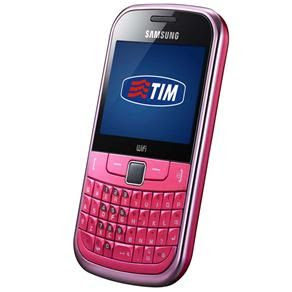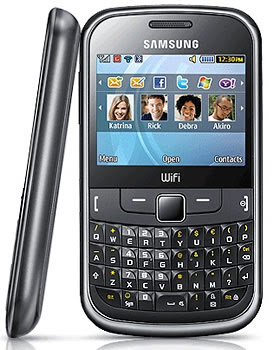Thursday, 1 December 2011
Tuesday, 29 November 2011
Saturday, 26 November 2011
Laser Technology could kill viruses and improve DVDs
laser technology could kill viruses and improve DVDs |
Ultraviolet semiconductor diode lasers are widely used in data processing, information storage and biology. Their applications have been limited, however, by size, cost and power. The current generation of ultraviolet lasers is based on a material called gallium nitride, but Jianlin Liu, a professor of electrical engineering, and colleagues have made a breakthrough in zinc oxide nanowire waveguide lasers, which can offer smaller sizes, lower costs, higher powers and shorter wavelengths.
Until now, zinc oxide nanowires couldn't be used in real world light emission applications because of the lack of p-type, or positive type, material needed by all semiconductors. Liu solved that problem by doping the zinc oxide nanowires with antimony, a metalloid element, to create the p-type material.
The p-type zinc oxide nanowires were connected with n-type, or negative type, zinc oxide material to form a device called p-n junction diode. Powered by a battery, highly directional laser light emits only from the ends of the nanowires.
"People in the zinc oxide research community throughout the world have been trying hard to achieve this for the past decade," Liu said. "This discovery is likely to stimulate the whole field to push the technology further".
Liu's findings have been reported in the recent issue of Nature Nanotechnology Co-authors are: Sheng Chu, Guoping Wang, Jieying Kong, Lin Li and Jingjian Ren, all graduate students at UC Riverside; Weihang Zhou, a student at Fudan University in China; Leonid Chernyak, a professor of physics at the University of Central Florida; Yuqing Lin, a graduate student at the University of Central Florida; and Jianze Zhao, a visiting student from Dalian University of Technology in China.
The discovery could have a wide-range of impacts.
For information storage, the zinc oxide nanowire lasers could be used to read and process much denser data on storage media such as DVDs because the ultraviolet has shorter wavelength than other lights, such as red. For example, a DVD that would store two hours of music could store four or six hours using the new type of laser.
For biology and medical therapeutics, the ultra-small laser light beam from a nanowire laser can penetrate a living cell, or excite or change its function from a bad cell to a good cell. The light could also be used to purify drinking water.
For photonics, the ultraviolet light could provide superfast data processing and transmission. Reliable small ultraviolet semiconductor diode lasers may help develop ultraviolet wireless communication technology, which is potentially better than state-of-the-art infrared communication technologies used in various electronic information systems.
While Liu and the students in his laboratory have demonstrated the p-type doping of zinc oxide and electrically powered nanowire waveguide lasing in the ultraviolet range, he said more work still needs to be done with the stability and reliability of the p-type material.
Kyobo eReader's XGA Mirasol Display Could Challenge LCDs
 |
Kyobo eReader's XGA Mirasol Display Could Challenge LCDs |
The "Kyobo eReader" was unveiled this week in Seoul and will reach South Korean consumers as early as Dec. 1, Kyobo Book Centre officials said Thursday.
The e-reader features Qualcomm's 1.0 GHz "Snapdragon" processor, a custom Kyobo application based on Android and a 5.7 inch "XGA" mirasol display.
The mirasol display uses ambient light instead of its own in much the same way that a peacock's plumage gets its scintillating hues. Qualcomm's mirasols have already been used in a few Chinese and South Korean phones, and in an MP3 player on the U.S. market. The display contains tiny mirrors that consume power only when they're moving, easing battery drain. Mirasol displays also quickly change from one image to the next and show video.
The global market for e-readers is dominated by bright LCDs and grayscale "e-ink" screens. LCDs consume relatively more battery power while e-ink screens are slow to refresh.
The introduction of the e-reader jointly developed by Qualcomm and Kyobo signals increasing competition in the global market for tablets.
U.S. online retailer Amazon.com Inc. and bookseller Barnes & Noble Inc. have recently released tablets of their own, Kindle Fire and Nook Tablet, and are challenging Apple's iPad in pricing.
Qualcomm CEO Paul Jacobs noted South Koreans' near-100 percent literacy rate and digital reading skills during a launching ceremony in Seoul on Tuesday, according to the San Diego-based company. Fifteen-year-old South Koreans scored highest in their ability to absorb information from digital devices, according to a 2009 study by the Organization for Economic Cooperation and Development. Over 80 percent of households in South Korea have broadband Internet access.
The e-reader featuring the mirasol display will be priced at 349,000 won, or $302, said Seoul-based Kyobo, South Korea's largest bookseller.
Thursday, 10 November 2011
Verizon Plans a Fast Lane for Some Apps
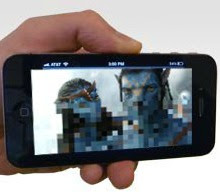 | |
Breaking up: Verizon's new technology might allow customers to pay for high bandwidth in advance: if they wanted to avoid the picture breaking up while streaming a movie, for example. |
Wireless provider Verizon has developed technology that would allow mobile apps to request extra bandwidth for short periods—to fix a choppy video call if a local cell tower is experiencing high demand, for example, or to ensure that a video plays smoothly.
The feature is intended to allow bandwidth-hungry apps to survive even as soaring wireless Internet traffic from smart phones and tablets strains the networks serving them. However, users or the companies that make data-hogging apps will have to pay for such turbo boosts, and the feature could face opposition from advocates of "net neutrality," the philosophy that all Internet traffic should be treated equally.
Verizon demonstrated the new feature—which is still in development—at the company's Application Innovation Center in San Francisco last week. High-quality video streaming over a 4G cellular link became pixilated as the available bandwidth was throttled, to simulate what can happen when a lot of users request data in the same area. That was reversed when the application receiving the video used a new API to request a bandwidth boost.
"Maybe, for the first time in the world, programs can make the network coincide with their business and technology goals," says Hugh Fletcher, who leads Verizon's efforts to allow outside software to access data and features of the company's cellular network that are traditionally meant for internal use only.
Verizon plans to charge for the service. Fletcher says a consumer might pay directly for extra bandwidth for a short time: for example, to guarantee that a movie will stream at high quality. Alternatively, the cost of the extra bandwidth might be included in the price of a subscription to a movie streaming service, or added to the cost of a video call, for example.
Fletcher stressed that no business model or even preferred use cases have yet been settled upon for the bandwidth-boosting feature. However, he predicts that—as happened after the launch of Apple's mobile app store—mobile developers will create uses for the new feature that could never be imagined by those offering it. "Think of Verizon's network as a platform like Facebook or Twitter that developers can tap into the capabilities of," he says.
Gscreen Spacebook
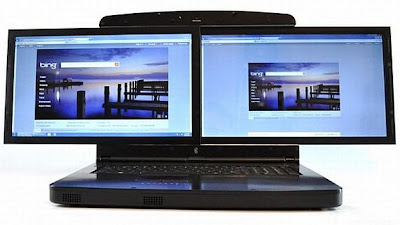 |
| Portable Gscreen Spacebook |
Technology | Gscreen Spacebook | This is Titan M1 dual Screen coming-soon laptop introduce by gScreen this is the latest technology of amazing laptop with including great advantage this is the new generation of laptop.The new gScreen is gearing up to obtain the squashing off a latest laptop called the Titan M1 which is in fact a rugged edition of the company’s former G400 dual-screen laptop. The new Titan M1 dual screen laptop is best for businesses use it is available in slim design with amazing color.
The new Titan M1 laptop has the aptitude to carry on excessive surroundings it is available in bright 15.4 inch dual-screen display also it has great capacity of excellent quality of Intel Core 2 QUAD QX9300 processor, also it available in a 500GB hard drive, it has including 4GB RAM and MIL-STD 810F standards.The company gScreen has plans to launch further non-rugged edition of13.3- to 17-inches laptops. This new Titan M1 dual screen laptop is the latest laptop it is best for daily business use it is different to others it has amazing functions it is easily to use anytime it has great capacity.In market there are lots of latest laptops are available but this new gScreen latest Titan M1 dual screen laptop is best for any time of work!
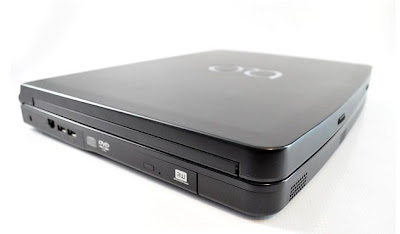 |
| Full hd gscreen spacebook |
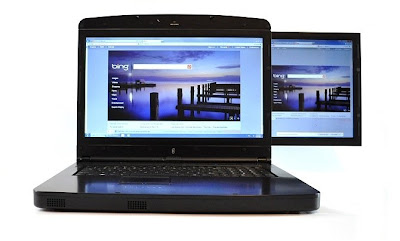 |
| gscreen spacebook latest technology |
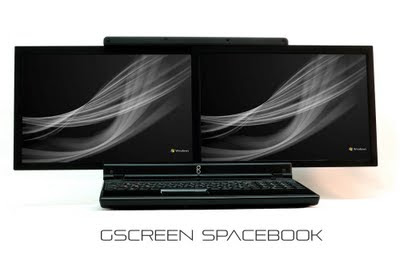 |
| Dual screen |
 |
| M1 dual screen spacebook |
 |
| Lenovo's gscreen spacebook |
Saturday, 5 November 2011
Samsung Google Galaxy Nexus I9250
 |
| Samsung Google Galaxy Nexus I9250 |
| Body and Display |
| Display Type | Super AMOLED capacitive touchscreen, 16M colors |
| Display Size | 4.65 inches |
| Display Resolution | 720 x 1280 pixels |
| Body Dimensions | 135.5 x 67.9 x 8.9 mm |
| Weight | 135 g |
| Body Color | Black |
| Memory Data |
| Internal Memory | 16/32GB storage, 1 GB RAM |
| Card Slot | MicroSD, 32GB max |
| Phonebook | Practically Unlimited |
| Connectivity and Data Network |
| Bluetooth | v3.0 with A2DP |
| USB | v2.0 microUSB |
| 3G | HSDPA, 21 Mbps; HSUPA, 5.76 Mbps; LTE |
| GPRS | Yes |
| EDGE | Yes |
| WLAN | Wi-Fi 802.11 a/b/g/n, dual-band, DLNA, Wi-Fi hotspot |
| Camera Data |
| Primary | 5 MP, 2592×1936 pixels |
| Features | Autofocus, LED flash, Touch focus, Geo-tagging, Face detection |
| Secondary | 1.3 MP |
| Video | 1080p@30fps |
| Battery Info |
| Type | Li-Ion 1750 mAh |
| Stand-by | - |
| Talk time | - |
| Other Data |
| Messaging | SMS(threaded view), MMS, Email, Push Mail, IM, RSS |
| Games | Yes |
| Browser | HTML |
| Radio | Stereo FM radio with RDS |
| Java | via Java MIDP emulator |
| GPS | with A-GPS support |
| Extra Feature |
|
| Extra Feature |
|








